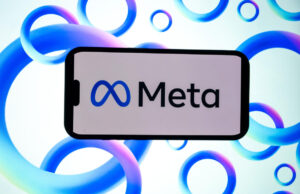Is It Possible to Disable AI Tools from Google and Meta? Occasionally, and Here’s the Process.

The Rise of AI in Everyday Technology
Introduction to AI Integration
Major technology companies such as Google, Apple, Microsoft, and Meta are rapidly integrating artificial intelligence (AI) into their products. These companies promise that soon everyone will utilize AI to simplify tasks such as composing emails, generating images, and summarizing articles. However, a significant number of people, especially those outside the tech sphere, seem disinterested, often expressing frustration over the increasing prominence of AI in their daily lives.
User Engagement with AI
The tech giants rely heavily on user interactions to train their AI systems and enhance their capabilities. This reliance means users inadvertently contribute to the development of these technologies through their everyday activities. For example, if you type a query like "Is Jay-Z left-handed?" into Google, you’ll receive an AI-generated summary at the top of the search results. Similarly, when you use the search feature in Instagram, you may find yourself interacting with Meta’s AI chatbot, known as Meta AI.
Apple is also gearing up to push AI features onto iPhones and other devices through upcoming software updates. This includes integrating AI tools into everyday applications such as photo editing and text messaging, making AI a constant presence in our technology usage.
Concerns Over Data Privacy
The growing use of AI raises pressing concerns regarding data privacy. Companies developing and implementing these AI systems are actively interested in assembling and analyzing the vast amounts of digital information generated by users. This includes data from photographs, text messages, web searches, and more, which helps improve AI systems but also raises red flags about personal privacy.
User Frustrations and Trust Issues
Many users find AI tools annoying, especially when they do not function effectively. Thorin Klosowski, a security analyst at the Electronic Frontier Foundation, highlights that there is considerable distrust surrounding AI, but much of the issue also stems from poor design. Users often feel that AI systems are obtrusive and interfere with their experience.
How to Opt-Out of AI Features
If you’re among those who prefer to minimize your engagement with AI tools, there are options available to disable these features, though they vary by company. Here’s how to do it for major tech brands:
- Access Account Settings: Go to your Google Account.
- Manage Data & Personalization: Find the section labeled "Data & Personalization."
- Turn Off AI Features: You can disable certain AI-driven features by adjusting settings like "Web & App Activity."
Microsoft
- Open Settings: Start by navigating to your Microsoft account settings.
- Privacy Options: Locate the privacy options related to data collection.
- Disable Unwanted Features: From here, you can turn off features you don’t want.
Meta (Facebook/Instagram)
- Account Settings: Open your account settings.
- Privacy Shortcuts: Look for Privacy Shortcuts that include ad preferences and data settings.
- Adjust AI-related Features: Disable any AI-driven engagement tools.
Apple
- Device Settings: Go to your device’s settings.
- Privacy: Tap on Privacy and then on Analytics & Improvements.
- Opt-Out: You can opt out of sharing data that helps the AI improve.
By following these steps, users can take control of their engagement with AI technologies, ensuring they remain informed and comfortable with how their data is being used or not used. While AI is becoming a part of our daily technological experience, it’s crucial to stay aware of its implications and manage our preferences effectively.






